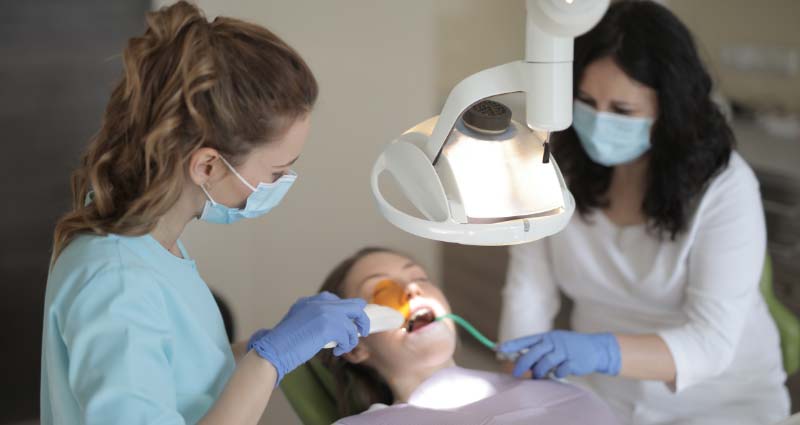
A maxillary sinus lift, also known as sinus augmentation, is a surgical procedure aimed at addressing insufficient bone height in the upper jaw. This procedure enhances the foundation for dental implants by augmenting the sinus cavity’s floor with bone graft material.
Over the last decade, improvements in dental implants have revolutionized dentistry. The fascinating improvement in the field has resulted in the dental implants process offering highly predictable results. However, even with all these improvements, there could be some cases where there are some limitations and two most common ones being the lack of considerable bone to support and need for additional surgical procedures like sinus lift. Also the cost, the number of visits and time taken for these surgical procedures is also to be considered.
What is Sinus?
Sinus refers to an air-filled space within the skull bone. It exists in various locations throughout the skull.
A sinus lift procedure involves placing an artificial bone graft into the sinus cavity. This surgical procedure is recommended to patients lacking adequate bone height in the upper jaw for dental implant placement. It typically requires a minimum one-hour procedure and entails post-operative care.
The maxillary sinus, located above the upper back teeth and beside the nose, is an air-filled space with a pink soft tissue lining known as the sinus membrane. It plays a crucial role in dental implant placement, particularly in the upper back teeth region. The sinuses serve vital functions, including reducing skull weight, moisturizing the air, and affecting speech tone quality. A sinus lift procedure is necessary when the sinus floor is too close to the implant site, ensuring successful implant placement without compromising sinus function.
Benefits
- The maxillary sinus, positioned above the upper back teeth and beside the nose, is an air-filled space lined with a soft tissue membrane.
- Typically, there are two pyramidal maxillary sinuses located above the upper back teeth.
- This sinus serves crucial functions, such as reducing skull weight, moisturizing the air, and influencing speech tone.
- Due to its proximity to the upper back teeth, the maxillary sinus plays a significant role in dental implant placement in this region.
- Dental implants should not obstruct these sinuses to preserve their important functions.
- A sinus lift procedure is necessary when the floor of the sinus is too close to the implant site, ensuring successful implant placement while maintaining sinus function.
The floor of the sinus may lower due to:
Prolonged tooth loss Periodontal disease TraumaDrawbacks of Dental Implants with Sinus Lift:
Time-consuming: The procedure requires a waiting period of around 6-8 months for proper healing and integration of the bone graft material. Higher cost: Dental implants with sinus lift are relatively more expensive compared to regular dental implants due to the additional surgical steps and materials involved. Increased invasiveness: Sinus lift surgery is more invasive compared to standard dental implant procedures, as it involves accessing and lifting the sinus membrane. Potential complications: There is a risk of complications such as membrane rupture during the procedure, which may require additional surgical intervention after the initial healing period. Postoperative discomfort: Patients may experience postoperative pain, swelling, and in some cases, hematoma formation following the sinus lift procedure.The sinus lift and bone grafting procedure involves the following steps:
Sinus Membrane Elevation: The sinus membrane is lifted, creating space between the membrane and the bone. Bone Graft Placement: An artificial bone graft material is inserted into the created space to the required thickness for future dental implant support. The area is then closed. Healing Period: The patient is instructed to wait for 6 to 8 months for the bone graft to integrate with the surrounding bone tissue. Dental Implant Placement: After the healing period, a dental implant is typically placed. Some dentists may opt to place the dental implant and perform bone grafting simultaneously to avoid a separate surgical procedure.Types of Sinus Lift
Lateral window /Direct technique Osteotome /Indirect techniqueFrequently Asked Questions:
How do I know if I'm a candidate for Maxillary Sinus Lift implants?
Through a thorough examination, including X-rays and scans, Our dental specialist will determine if you have enough bone to support implants. If not, we will discuss the need for a sinus lift.
What is the success rate of Maxillary Sinus Lift implant treatment?
Success rates for this procedure are usually high, but they may differ by depending on factors such as your overall health and your adherence to post-operative care instructions. OurThe Specialist Dentist can provide more specific information.
Is the procedure painful?
The procedure is typically done under local anesthesia, so you should not experience pain during the surgery. Some discomfort and swelling can be expected afterward, but our The Specialist Dentist will prescribe pain medication to manage it.
How long does the recovery period last?
The initial healing period usually lasts a few days to a week. However, full integration of the bone graft with your natural bone may take several months. Our dental specialist will provide a detailed recovery timeline tailored to your specific situation.

How Can We Help?
+91 9635132003
specialistdentistdrakash@gmail.com

